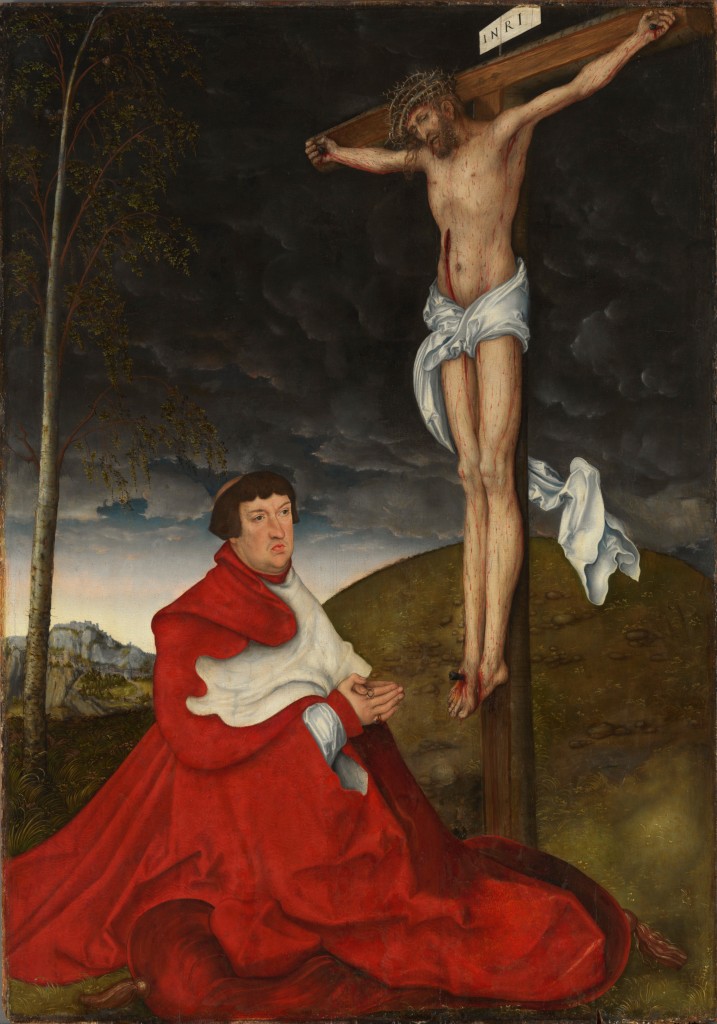Crucifixion with Cardinal by Lucas Cranach, the Elder, John 19:17-27, Bible.Gallery
Artwork Description

"Crucifixion with Cardinal" by Lucas Cranach the Elder is an oil-on-panel painting created between c. 1520 and 1529, inspired by the biblical passage from John 19:17-27. This artwork portrays the crucifixion of Jesus Christ, with the addition of a cardinal figure standing at the foot of the cross.
Here are some key aspects to analyze in "Crucifixion with Cardinal":
1. Composition and Focus: Cranach's composition places the crucifixion scene at the center of the painting, with Jesus on the cross as the main focus. The cardinal, dressed in his distinctive red robes, stands at the foot of the cross, in an atypical representation that draws attention to his presence during this pivotal moment. This unique addition of the cardinal adds an intriguing element to the traditional crucifixion scene.
2. Symbolism: The inclusion of the cardinal in the scene adds symbolic significance. Cardinals were high-ranking officials within the Catholic Church, and their presence may symbolize the Church's role in the crucifixion narrative. It could also represent the idea of witnessing the sacrifice of Christ, emphasizing the connection between religious authority and the central event of Christianity.
3. Emotional Expression: Cranach's attention to the emotional expression of the figures adds depth to the narrative. The suffering and agony of Jesus on the cross are palpable, while the facial expressions of the cardinal and other bystanders may convey various emotional responses, such as solemnity, grief, or contemplation.
4. Size and Medium: With dimensions of 112cm ✕ 158cm, the painting is of substantial size, allowing for intricate details and expressive figures. The use of oil on panel was common during this period, providing the artist with the ability to create vibrant colors and detailed brushwork.
5. Context and Historical Influence: Cranach the Elder was a prominent artist of the Northern Renaissance, and his works were influenced by the religious and cultural context of his time. The inclusion of the cardinal in the painting may be linked to the historical and political ties between the Catholic Church and the nobility during the Renaissance period.
6. Theological Themes: "Crucifixion with Cardinal" explores theological themes of redemption, sacrifice, and the crucifixion as a central event in Christian theology. The cardinal's presence may also prompt contemplation on the relationship between religious institutions and spiritual matters.
In conclusion, "Crucifixion with Cardinal" by Lucas Cranach the Elder is a thought-provoking and unique portrayal of the crucifixion scene, with the addition of a cardinal figure that adds symbolic depth to the narrative. Through its composition, symbolism, and emotional expression, the painting invites viewers to reflect on the significance of Christ's sacrifice and the role of religious authority in the context of this pivotal event. As a product of the Northern Renaissance, the artwork reflects Cranach's artistic vision and the religious and political influences of his time.